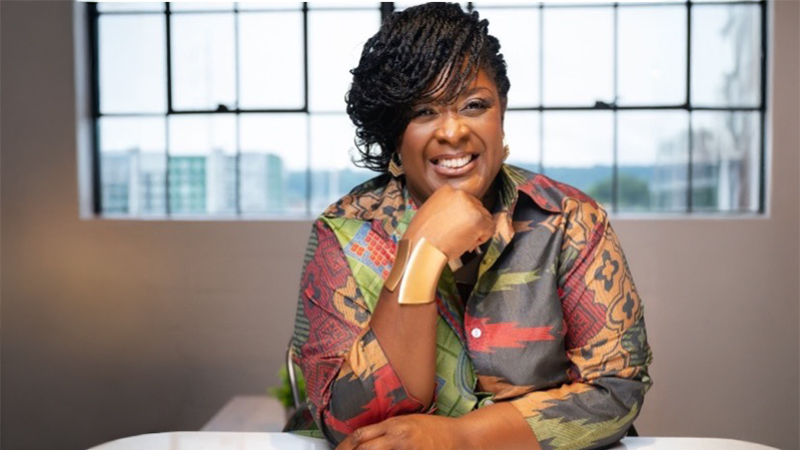Distributed Leadership: Empowering Teachers to Make a Lasting Difference for Students


This blog first appeared on #PrincipalProject. #Principal Project is a network committed to connecting school leaders to evidence-based best practices--and to each other!--and represents over 50,000 school leaders over Twitter and email. @PrincipalProj
When I first took on the principal role at a Chicago high school for the arts, I was charged with reopening a school that had been closed. I had the joy of leading our journey to strong engagement, low dropout rates and academic excellence – but I didn’t do it alone. I knew that if I created a partnership with my new team, we could build the instructional culture that our students needed to thrive – and to get us there, I relied on distributed leadership.
For me, distributed leadership means setting a mission and a destination for your team, but mapping the journey with them. I told my team I could see that I was surrounded by great educators, and I was going to call on their capabilities and commitment to transform our school community. Here are three steps I took to inspire leadership on my new team – and build a culture of success for my new students:
Leverage each member of your team’s goals and strengths to serve your school’s needs
At the beginning of the school year, I worked with each teacher on my team to sketch out their strengths and goals. After those conversations, I looked for intersections with our students’ needs. When an English teacher told me she felt inspired to go into school leadership, I thought about the expertise she brought to her practice, and I thought about the standards of engagement and mastery we wanted our students to meet – and I asked her to serve as our English department chair. With my support, she led her colleagues in setting learning goals for our students, solving problems and evaluating growth. She gained valuable leadership experience, which informed her progress through residency and toward a principal role – and I gained more time to focus on school-wide priorities. By mapping her goal onto our school’s needs, I was able to make her feel valued, make the most of her expertise and make the most of my own time – all for our students’ benefit.
Promote teacher leadership to create professional learning that sticks
I believe there are three keys to making professional development stick for teachers: connecting it to shared instructional priorities, creating a transparent system for measuring and promoting progress, and explicitly centering the team’s expertise. So, when I planned PD, I again looked for ways to align individual strengths and goals with shared priorities. When we set a schoolwide goal to promote close reading skills for all our students, I checked my team’s profiles. One educator had an interest in coaching, and he was phenomenal at teaching close reading, so I asked him to shape our PD plans. First he led a summer workshop on close reading strategies. Then he worked with the team on a series of learning cycles, including classroom observations. After a few cycles, we sat down to ask, “How are we implementing these strategies, and what supports do we need? How are our students engaging, and what do their assessments show?” As we reviewed observation notes and student data, I saw how invested everyone felt. By giving one teacher the chance to guide our steps, we made the whole team feel valued – and got everyone to commit to the journey we needed to take for our students.
Provide time and trust – then, recognition and reinforcement!
When we micromanage teachers, we’re telling them we don’t trust them, and that prevents them from doing their best – or even from staying on our team. That’s why I center my approach to distributed leadership on creating chances for people to grow, providing support – and getting out of the way. So for example, on a PD day, I didn’t over-structure the process. We spent time learning together as a whole, and then I gave everyone time to strategize in groups or on their own. Skilled, experienced teachers don’t need their principal to say, “Here are some new tools, and here’s how you’re going to use them.” They need their principal to say, “I see how you innovate to support great outcomes for your students. I’d love to hear how you might use these new tools to promote more growth for your kids – and how I can help.” That’s how I made teachers feel empowered about taking new PD back to their classrooms. To keep momentum going, when I set a follow-up meeting to discuss how new PD was impacting our students’ progress, I didn’t just assess performance – I celebrated what educators had accomplished and asked how I could support them further.
To me, “distributed leadership” really just means encouraging teachers to do what they do best – and empowering them to challenge themselves to do it bigger and better. Every teacher brings leadership qualities to your table – from expertise and experience, to innovation and vision. All those qualities can be leveraged and encouraged for your students’ benefit. When I left my principal role to work on new leadership initiatives, I was proud to see my former teachers and students continuing to thrive, but I wasn’t surprised. That’s what happens when we invite teachers to make the most of their strengths and goals: We empower them to make a lasting difference for students.
Below, I’m sharing a collection of resources on making use of distributed leadership strategies to benefit our school communities:




.svg)
.svg)
.svg)
.svg)



.svg)
.svg)
.webp)







